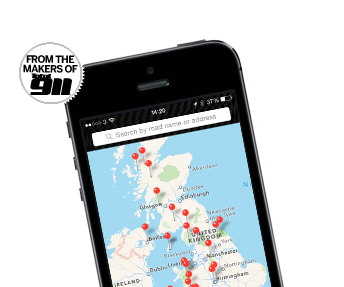Ruta De La Dunas, Fuerteventura, Canary Islands
You’d be forgiven for assuming the Canary Islands have little more to offer than stretches of overcrowded beach and a tirade of drunken brides-to-be with their customary L-plates.
But some of the world’s fi nest driving roads can be found hidden away across this small cluster of Atlantic islands and, situated just off the west coast of Morocco, the incoming Sahara winds guarantee you won’t need those winter tyres.
There is a heady collection of decadent tourist ‘facilities’ across the Canaries, but away from the urban sprawl of package holiday destinations, each island offers its own unique landscape sculpted by over 20 million years of volcanic activity. There are few paved roads in the central areas but those that do exist are breathtaking.

Fuerteventura is perhaps the more reserved of the islands; mass-tourism hasn’t found a foothold… yet. It’s also internationally known for the secluded coves dotted along the coastline and in distinct contrast to the other islands, the majority of the landscape consists of unbroken, windy planes and ancient, flat lava fields.
It’s no surprise then that one of Europe’s most stunning roads, the Ruta De La Dunas de Fuerteventura, is found very much inland – and it’s anything but flat.
The winding FV-30 stretches for around 20 miles from Casillas del Angel, through the Parque Rural de Betancuria (a protected mountain park), down to the small southern city of Pajara.
Offering a quick-fire succession of hairpin turns and blind bends, the first thing that even the most seasoned of drivers will notice is that, as the road winds up through the mountains, the experience can be distinctly hair-raising.

Bravery is always a consideration here but a surge in confidence will materialise after the first few miles. With that in mind, watch out for the odd coach creeping through the mountains. It’s not a busy route but turning a corner to find a substantial oncoming vehicle can come as a surprise!
As the route hits the summit and winds down into the first valley, the early 15th century town of Betancuria marks the halfway point, with its impressive Iglesia de Santa Maria cathedral.
But the best part is you get to go back up the mountain and do it all over again. Be warned though, in the south the hairpins get tighter, higher and faster-paced and the road often narrows to a single carriageway. Watch out for those coaches!

More from Total 911

Sales Spotlight: Porsche 911 Carrera 2.7 MFI Targa

WORLD EXCLUSIVE: 2017 Porsche 911 GT3 testing with manual ‘box

Poll: Which Porsche 911 is the most underrated?




Comments (0)